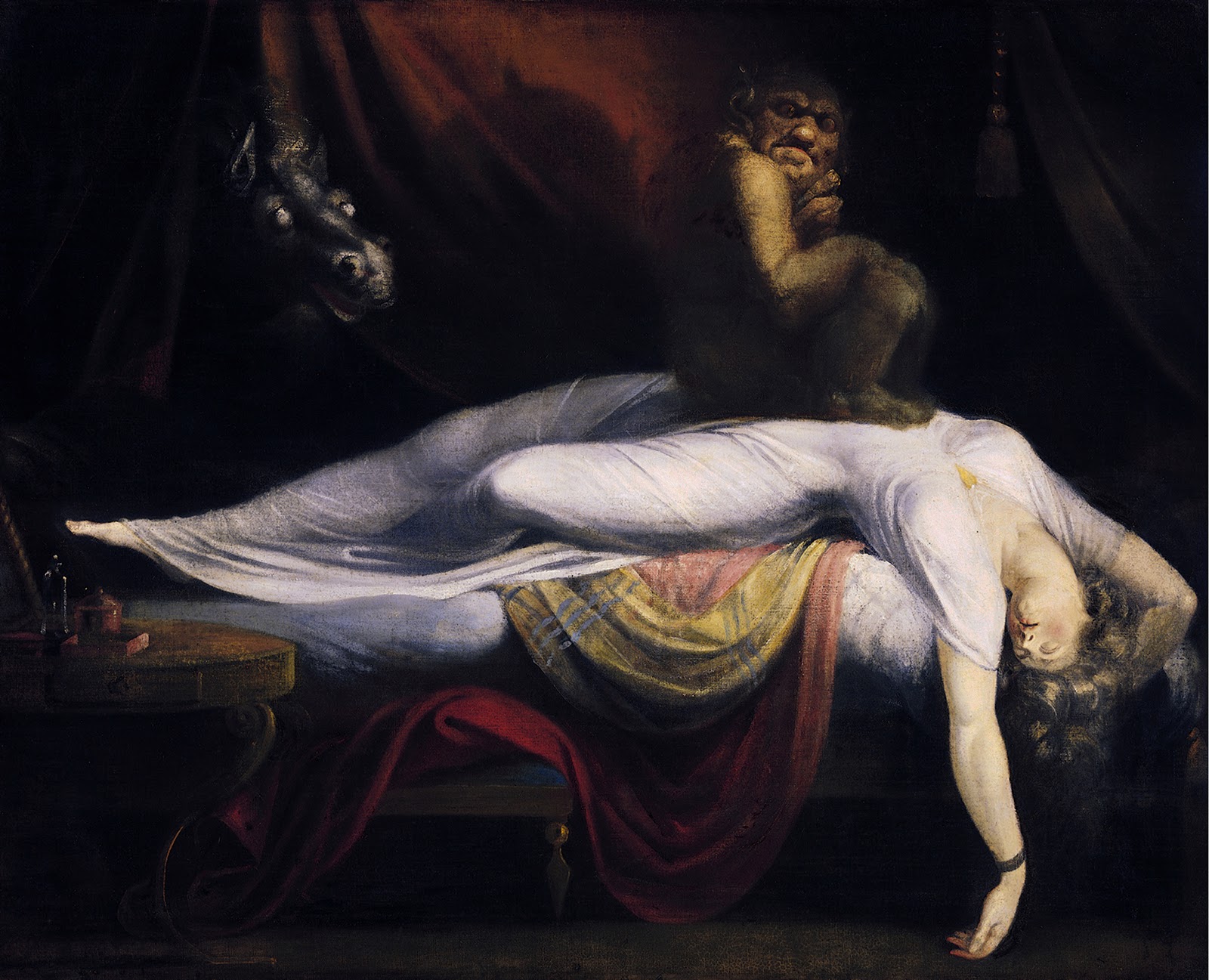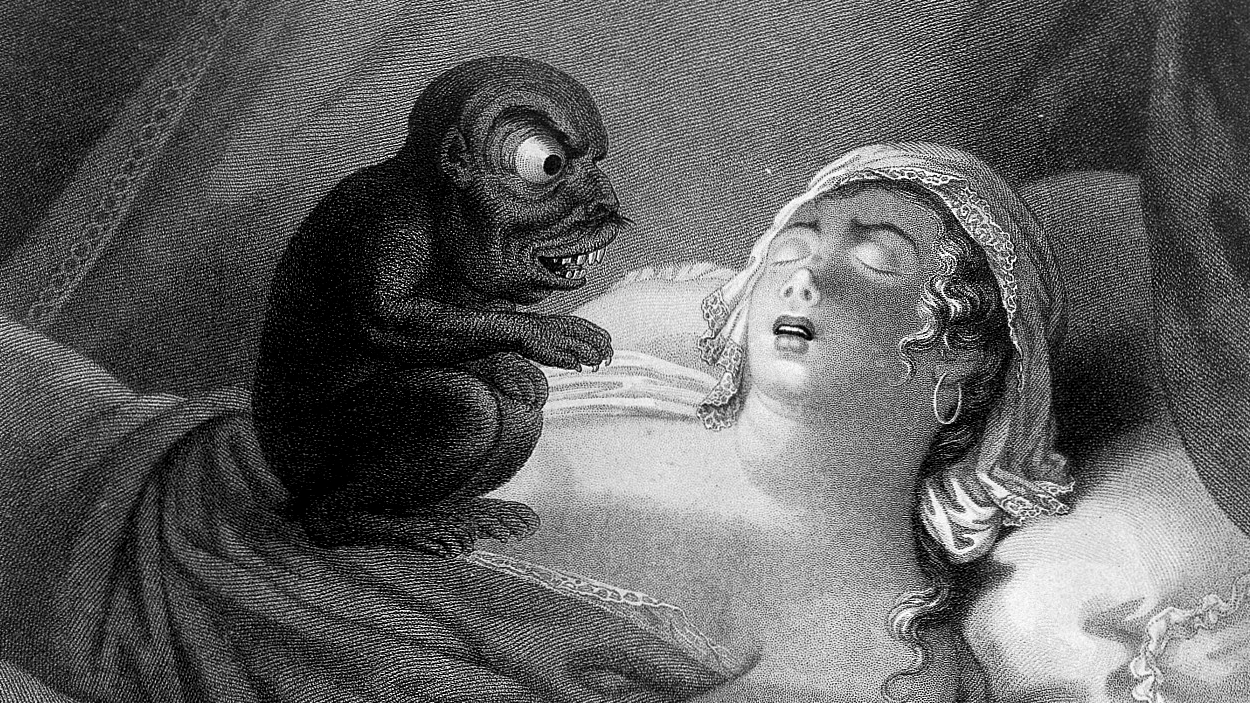I don’t mind bad dreams. When you wake up, the dream fades away. What utterly terrifies me, though, is when my brain wakes up but my body cannot move. That’s sleep paralysis, and it affects anywhere between seven and 40 per cent of us.
Illustration by Angelica Alzona.
Sleep Paralysis Is Only Scary When You Notice It
Since your dreams may involve you moving and walking around, your brain shuts down communication to your muscles during REM, or dreaming, sleep so you don’t actually move and walk around when you should be in bed. In that sense, paralysis during sleep is totally normal.
The scary kind of sleep paralysis occurs when you are awake enough to be aware of your surroundings, but your body is still paralysed. It can happen as you are falling asleep, or as you are waking up. Although sleep paralysis is terrifying and can happen at night, this condition is no relation to night terrors. The two are opposites, in a sense: in a night terror, you are asleep but moving around. In sleep paralysis, you are awake but cannot move.
Hallucinations Add to the Fear

As if paralysis weren’t bad enough, many people hallucinate during a sleep paralysis episode. Sometimes the hallucination is a specific image that you can see; other times it is a vague sense that someone, or something, is in the room with you. A report in the journal Consciousness and Cognition identifies three common types of hallucinations:
- An intruder that is in the room with you
- A crushing feeling on your chest or back
- A feeling of flying or levitating.
My most vivid memory of sleep paralysis falls into the third category. I had finally fallen asleep, after pulling an all-nighter the night before, and in my dream I was at a party in a strange house. I became able to fly, hovering a few feet above the ground. It was fun, until I realised I was flying faster and faster. I woke up — sort of — but still felt like I was flying and could not stop. Some people who experience the floating type of sleep paralysis find it enjoyable, according to that same report in Consciousness and Cognition, but I couldn’t shake the feeling of sheer terror. After seconds or minutes — I don’t know, but it felt like an eternity — I was finally able to move and fully wake up.
People who experience the lurking or crushing hallucinations have described them as demons, dark clouds, burglars, and other unwelcome creatures. A Dutch woman in the 1600s described her visitors as a devil, a dog, and a thief. In a 2013 study in Culture, Medicine, and Psychiatry, some Danish participants described being visited by a ghost; their counterparts in Egypt put the hallucination in terms of a jinn, a spirit from Islamic mythology. In a group of Cambodian refugees who lived through the Pol Pot dictatorship, the intruders were sometimes attackers or relatives they recognised from their past.
In the study of Danish and Egyptian participants, people in both countries who considered themselves religious were more likely to interpret the hallucinations as something supernatural. Not surprisingly, those who thought they were being visited by something supernatural were more likely to report fear as part of the experience.
Your Best Weapons Against Sleep Paralysis Are Understanding and Relaxation

Understanding sleep paralysis as a brain glitch, rather than a demon or ghost, seems to help alleviate the fear. However scary the intruder may seem in the moment, nobody is actually in your bedroom threatening you.
Scientists are still debating why sleep paralysis happens, but we know that a few things make it more likely. For example, episodes are more common if your sleep is disrupted — like mine was after an all-nighter. People are also more likely to have sleep paralysis if they also have post-traumatic stress disorder, panic attacks, anxiety, or depression. Frequent sleep paralysis is also one of the symptoms of narcolepsy. The condition seems to run in families, and it’s more common in students than in the general population, maybe because of stress or sleep deprivation. While you can’t change your genetics or biology, you may be able to reduce your chances of having a paralysis episode if you don’t sleep on your back and if you keep a healthy sleep schedule.
When it comes to stopping sleep paralysis in the moment, a study in Behavioural Sleep Medicine gives a few suggestions. The authors surveyed people who experience sleep paralysis, and asked how they tried to stop it and whether they felt they were successful. Take the techniques with a grain of salt, because the episodes always stop eventually, so we don’t know whether or not these were responsible. The most successful tactics seemed to be:
- Trying to move an arm or a leg
- Trying to move another body part, such as the mouth
- Trying to relax with positive thoughts, prayer, or breathing exercises
The authors of that study speculate that the fear and panic in sleep paralysis may build to a peak, like in a panic attack, where “attempts to disrupt the episode become largely futile.” In that case, they write, it can help if you keep observations of your episodes of sleep paralysis so you can learn to recognise when they begin. That could let you use your techniques, like moving an arm or leg, earlier in the episode when they may be more likely to work.
Baland Jalal, who led the study about Danish and Egyptian sleepers’ experiences, favours a four-step meditation technique to relieve the fear and hopefully stop the paralysis:
- Remind yourself that the hallucination is just a dream.
- Distance yourself from the fear by telling yourself that this experience is “common, benign, and temporary” and so there is no reason to be afraid.
- Focus on something other than the hallucination, like a happy memory.
- Try to relax your muscles, rather than attempting to move.
This technique might work, but again, it hasn’t been tested in a large group of patients. Since meditation is good for you anyway, it doesn’t seem like it could hurt.

Comments